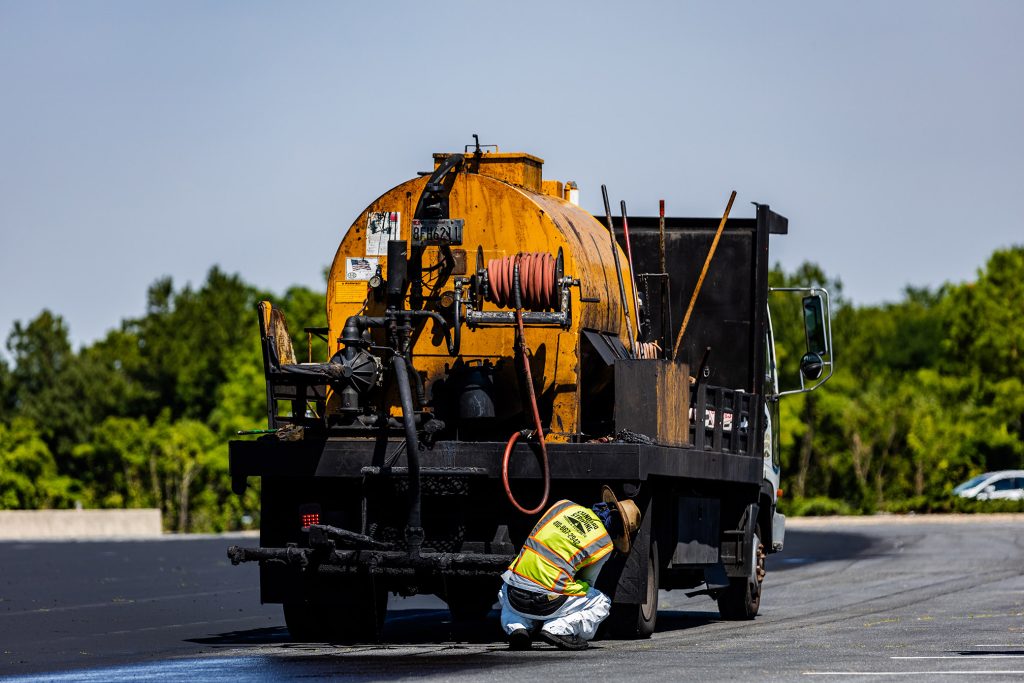
What Is Sealcoating?
Asphalt sealcoating equips pavements with a protective layer to prevent damage due to oxidation, water infiltration, harsh weather conditions, and other environmental factors. Proper sealcoating jobs slow the deterioration process, which helps your pavement last longer.
Want to save money annually by reducing pavement repair costs? Contact us to schedule a sealcoating service.
How Frequently Is Asphalt Sealcoating Required?
Reactive vs. Proactive Pavement Maintenance
Reactive Maintenance
Although cheaper initially, reactive maintenance will cost you more long-term. Here’s why reactive maintenance pales in comparison to preventative maintenance.
- It’s a crisis-based approach
- It reflects a neglect of work responsibilities
- It causes unexpected downtime
- It produces delays in service
Preventative Maintenance
Preventative maintenance might seem more expensive upfront, but it reduces costs in the long run by reducing the need for repairs and replacements. Here’s why preventative maintenance is better for your paved surface and your wallet.
- It’s a preparation-based approach
- It reflects an organized execution of work responsibilities
- It maximizes the pavement’s lifespan
- It helps you provide a detailed report of facility management metrics
The Asphalt Sealcoating Process
Sealcoating is a protective surface treatment applied to asphalt pavements to extend their lifespan and protect them from damage caused by UV rays, water, chemicals, and general wear and tear. The sealcoat application process typically involves the following steps:
Prepare
We remove dirt, vegetation, and other debris from the surface and clean the area so the sealcoat material adheres properly. We also fill any cracks and repair any potholes or other damages to create a more durable foundation. These initial steps help prevent water damage down the road.
Edge and Tape
We apply tape and other materials to the surrounding area that don’t require sealcoating. This might include concrete curbs or nearby structures.
Apply the Sealcoat
We use a spray system or squeegee to apply the coal-tar-based or asphalt-based emulsion material to the pavement. The type and size of the affected area will determine which sealcoating method you should use.
Coat Application
We apply an even layer of sealant to the surface, eliminating any gaps or uneven sections. Manufacturer recommendations determine the layer’s thickness, which typically lies between 1/16 and 1/8 of an inch.
Dry and Cure
We let the sealant dry and cure for 12 to 36 hours, depending on the humidity and ambient temperature.
Striping and Markings
We reapply lane markings, parking lines, and other pavement markings once the sealant has cured.
Our Service Areas
Maryland’s Paving & Concrete Provider
Standard Paving & Concrete is an industry-leading paving contractor in Maryland that offers asphalt and concrete paving, installation, maintenance, and repairs. We proudly serve clients across Maryland, Northern Virginia and Delaware. Find a location near you to get started.
Our Office:
983 Benning Road
Galesville, MD 20765
Have a job that extends beyond our service area? No worries. Our Pave America partners can help.
